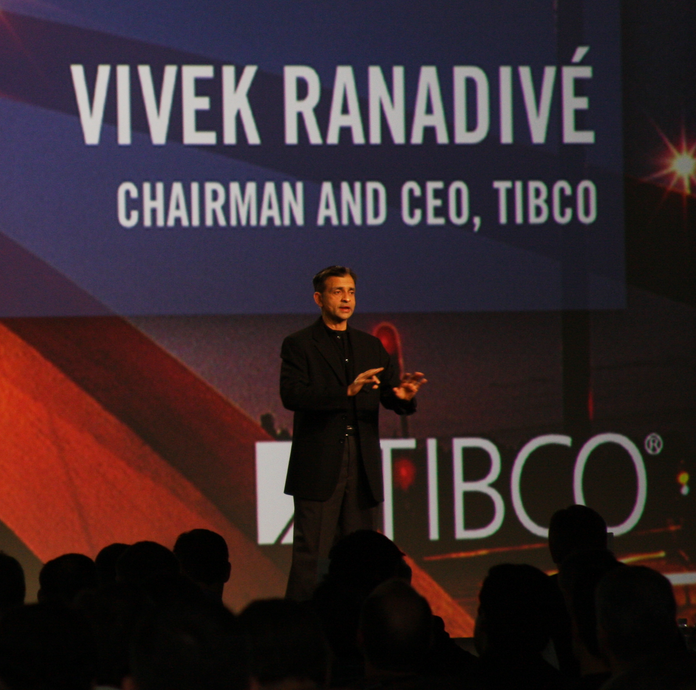Tibco CEO Vivek Ranadive on CIO influence, big data and sports

Tibco's financial results of late have featured sales totals that have disappointed, but CEO Vivek Ranadive argues that the wounds are self inflicted due to poor execution.

Ranadive expects better times to come via big data as Tibco uses its real-time messaging platform to expand into everything from analytics to log management to delivering retail offers while a customer is still in the aisle.
In Tibco's most recent quarter, service oriented architecture and infrastructure products were 52 percent of sales followed by business optimization at 40 percent. Process automation and Collaboration had 9 percent of sales. Financial services is 25 percent of sales with other verticals such as communications, energy and retail rounding out the mix.
We caught up with Tibco CEO Vivek Ranadive to talk shop. Here's a recap of the conversation.
Tibco has multiple products. What's the glue that holds these things together? Ranadive said Tibco started as a messaging company and became the backbone of Wall Street because it could deliver information in real time with low latency. That ability is still the glue. Tibco refers to this ability to shuttle information as a bus. "Whether it's your own inventory, customer details or somebody's Tweet all information flows through the bus in real time," said Ranadive. "The bus is the nervous system and once you have that you can use analytics and optimization to find patterns."
What does the enterprise IT buying cycle look like at the moment? Ranadive said he's not seeing "enterprise paralysis" because of the economy, but companies need to see value. "Customers have gotten beyond saving money and costs. Now they have to grow revenue. Every company will think of themselves as a retailer and try to deliver the right offer at the right time," said Ranadive. "Enterprises are willing to spend if they see value."
What does the buying table look like? Ranadive said companies have three catalysts for growth. CEOs in every industry need to grow revenue. "The way companies are growing revenue is upselling and cross selling existing customers," said Ranadive. "That's the No. 1 catalyst to grow revenue. Growing revenue means you're talking to the CMO." Another catalyst revolves around optimizing the supply chain to squeeze more value out of what you already have. That conversation revolves around a general manager of a business, head of supply chain, operating chief and chief financial officer. The third catalyst is managing risk and that involves dealing with things like fraud, security and network failures. "Big data tools are needed to recognize patterns needed to manage risk," said Ranadive. For instance, one retailer was trying to curb credit card fraud. Using Tibco's analytics tools, the retailer discovered that someone with razor blades, diapers and champagne in one cart is likely to have a stolen credit card.
But where's the CIO in this buying mix? "The power of the CIO has waned a bit. The CIO still needs to get sign off from another C-level to fund a project. The CIO will oversee the project, but often can't approve it on his own. He will need the CMO or another CXO to approve," explained Ranadive.
What has owning the Golden State Warriors and now Sacramento Kings affected your business approach? Ranadive said that he views his teams---the 50 percent stake in the Warriors is in a trust and has to be sold now that he owns the Kings---as a Petri dish. For instance, he used Tibco technology to engage the Warriors fan base. "I see the Warriors as a social network. You use technology to capture, engage it and later find ways to monetize," he said. "The network isn't the 20,000 fans in the arena, but the 500,000 also outside." Ranadive used big data tools to determine how to upsell ticket holders to buy merchandise as well to optimize the supply chain so there wouldn't be excess hot dogs and bobble heads at the end of the night. The Warriors experience became part of Tibco's "turn customers into fans" go to market message?
Can Tibco navigate SaaS? Today, Tibco's SaaS revenue is less than 10 percent of revenue, but Ranadive doesn't see a big issue. Why? Two thirds of Tibco's revenue is recurring with maintenance, services and licenses. Tibco's model doesn't revolve around big one-and-done deals.